Introduction
Bushbabies – also known as galagos – are small saucer-eyed nocturnal primates that spend most of their time in the trees of forests.
Of the 20 or so species of bushbaby, five are found in Uganda but the most common is the Lesser bushbaby (Galago senegalensis), which has been found across all of Uganda’s savannah reserves.1https://destinationuganda.com/animals/bush-baby/ The Dwarf bushbaby is found within Lake Mburo and Queen Elizabeth National Parks, as well as Kibale and Bwindi Impenetrable Forest. The Eastern Needle-clawed bushbaby and Thomas’ bushbaby call Kibale and Bwindi Impenetrable Forest their home.2https://www.ugandaparks.com/animals/primates/bush-babies/ The Prince Demidoff’s bushbaby is really tiny – just 70 grams (2.5 ounces), and is widespread in African rainforests from Sierra Leone to Uganda. The Lesser bushbaby is a little bigger but still tiny, weighing 150 to 200 grams (5 to 7 ounces). (The largest species, the brown greater galago can weigh up to 1.8 kg (4 pounds) and lives in coastal forests in southeastern Africa.3https://www.britannica.com/animal/bush-baby)
The estimate of the lifespan of bushbabies varies – the Lesser Bushbaby probably lives three to four years in the wild.
Fascinating facts
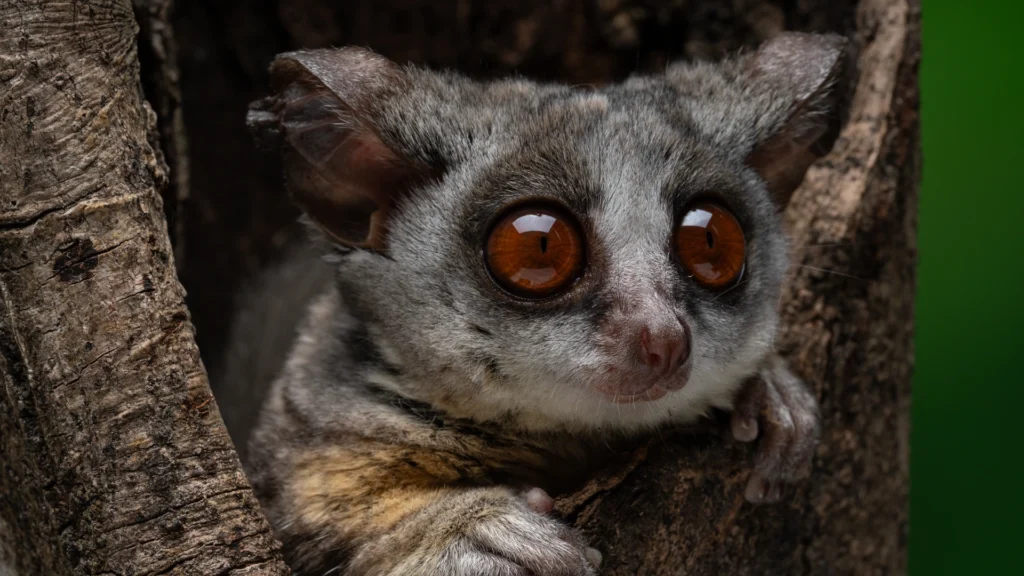
They might be called babies but they’re very old
Bushbabies are actually ancient prosimian primates, related to the lorises of Asia and the Lemurs of Madagascar. It is thought that bushbabies evolved before monkeys and became nocturnal so that they could hunt while all the bigger monkeys were fast asleep4https://www.bwindiugandagorillatrekking.com/bush-baby-facts/ and reduce the number of predators.
Cry baby
Although they’re unbelievably cute, that’s not why they’re called bushbabies. It’s actually because the call they make to communicate and mark their territory sounds like the wailing of a crying baby. In fact, some different species of bushbaby look so alike that scientists use their calls to tell them apart.5https://www.nationalgeographic.com/animals/mammals/facts/bushbabies
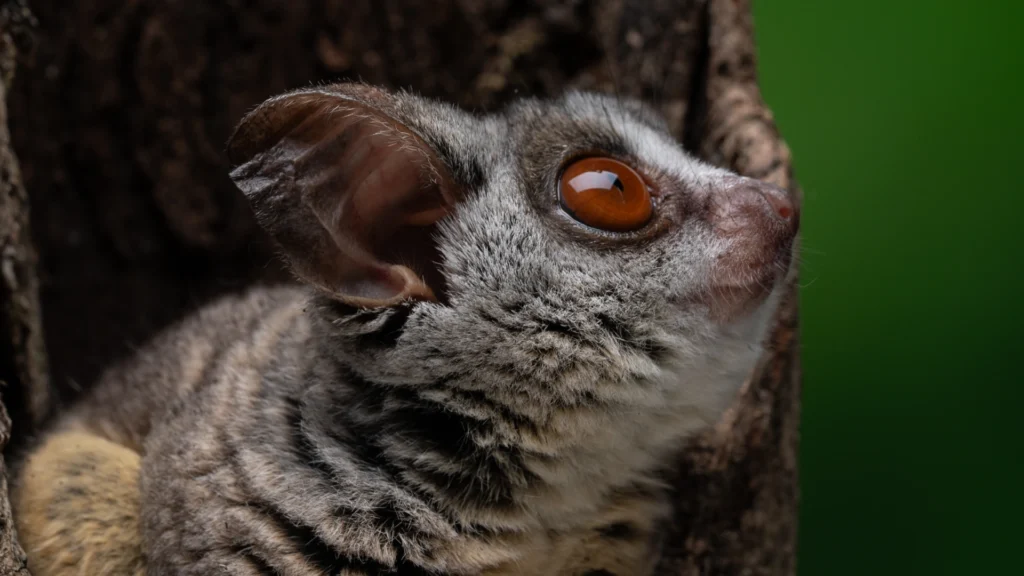
Bat ears
They both eat insects and hunt at night so it’s not surprising that bushbabies and bats share similar big ears. Their ears can move independently of each other, like little satellite dishes, to locate insects flying by. They can even fold their ears so they don’t get snagged on thorns as they jump through the trees. They also flatten their super-sensitive ears when sleeping in the day to keep things a little quieter. With their big eyes and awesome sense of sound, bushbabies have perfectly evolved for the night.
Superb coordination
Bushbabies have amazing hand-eye coordination and speed. In the dark, they can grab insects incredibly quickly out of the air with one or both hands.
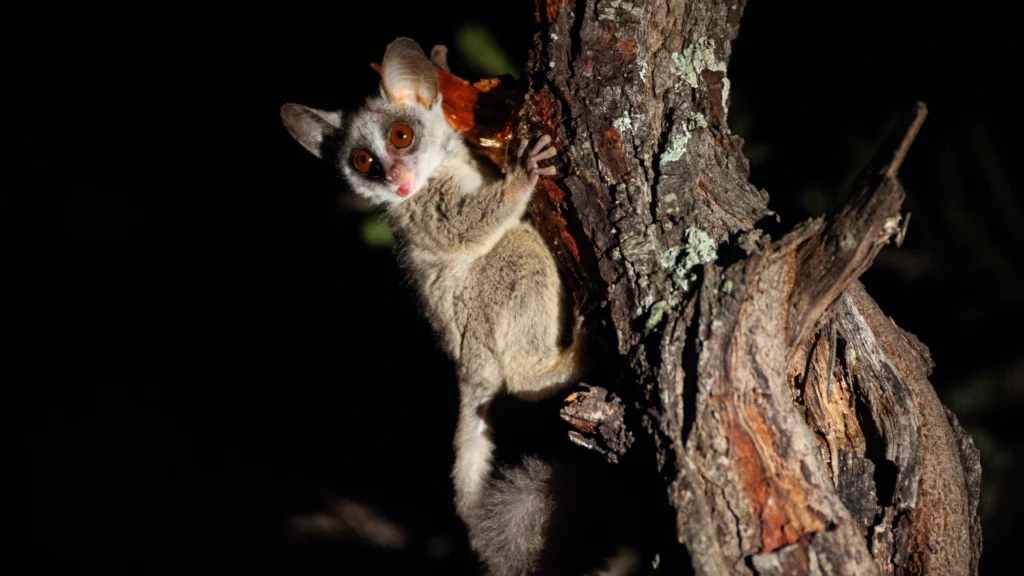
A mother’s love
A mother bushbaby is pregnant for 110-133 days. Females become very aggressive and protective before and after giving birth. After about a week of feeding the babies, the mother starts carrying them around in her mouth and carefully placing them on branches so they get a feel for tree life. The babies grow quickly but she still carries them around – only one at a time. After two months the mother has done her job, the babies are weaned and able to feed themselves.2https://www.ugandaparks.com/animals/primates/bush-babies/
Family ties
Bushbabies usually live in small family groups of between two and seven members. The group is made up of a mother and her young, or a couple of mothers and their young. Males are more solitary and aggressive towards each other. No matter how large the family group is, bushbabies hunt on their own at night and then return to their shared nest to nap during the day.
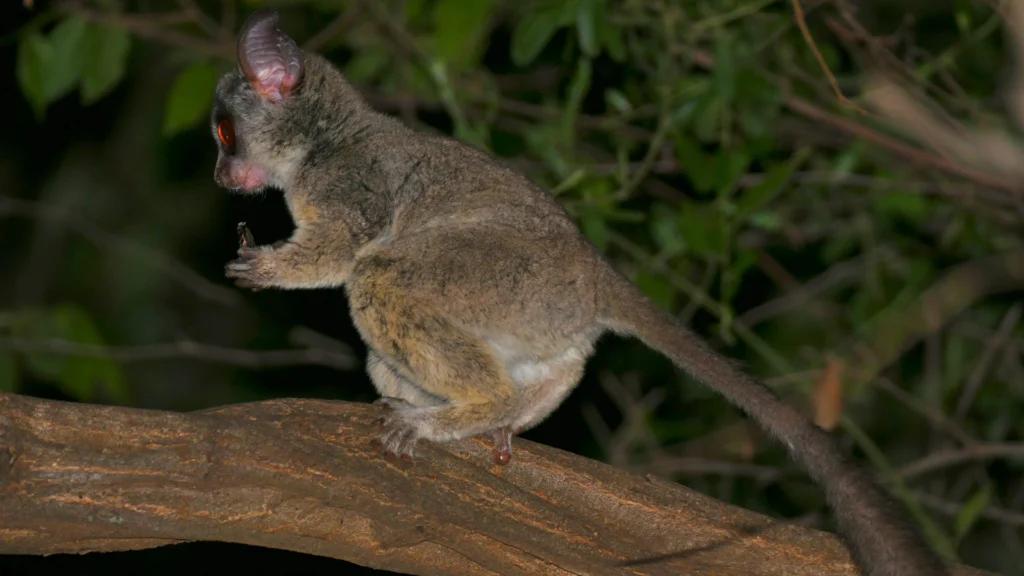
Jelly babies
Although bushbabies eat a lot of insects and fruit, most species also eat the gum from inside trees. They scrape the bark and gouge holes in the tree using specially evolved teeth. They can then return to the same spot and use their ”toothscraper” in the lower jaw to scoop up the gum that has seeped out.6https://link.springer.com/article/10.1007/BF02735592
Long jumpers
Bushbabies have extra long feet, powerful legs and an extremely long tail to help them move quickly through the trees. They are world-class climbers and can jump seven metres from one tree to the next, and over two metres straight up – that’s 12 times their body length!7https://www.monkeysanctuary.co.za/blog/85-tiny-bush-babies-are-surprisingly-built-for-the-kill They have stretchy tendons in their back legs which store energy and release like a catapult flinging the bushbaby gracefully through the air. When bushbabies venture to the ground, they hop around on their back legs like tiny kangaroos.
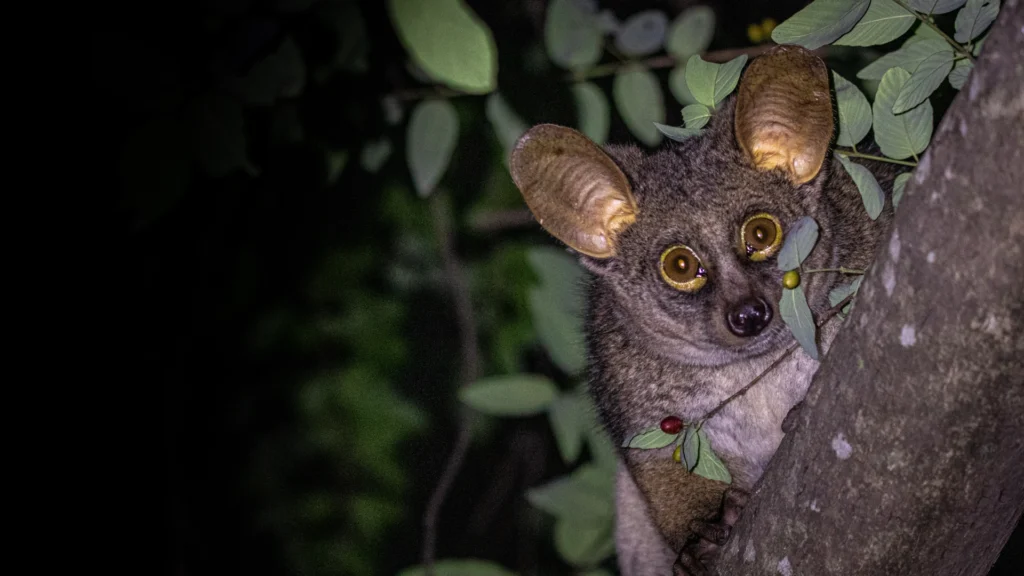
Cute fingers
Bushbabies’ hands are unusual. The fourth finger is the longest digit and the second finger is the shortest, which is adapted to be a pointed grooming claw to spruce up the neck and head fur and clean the ears. The fingers and toes have flat discs of thickened skin to help the bushbaby grasp slippy branches.8https://www.monkeysanctuary.co.za/blog/85-tiny-bush-babies-are-surprisingly-built-for-the-kill
Awash with wee
Bushbabies sometimes urinate into their cupped hands and wipe it on their feet, and then groom each other. The unique smell tells them they belong together! They also use urine to mark their routes through the trees – particularly to best nesting sites. Males also mark their territory boundaries.
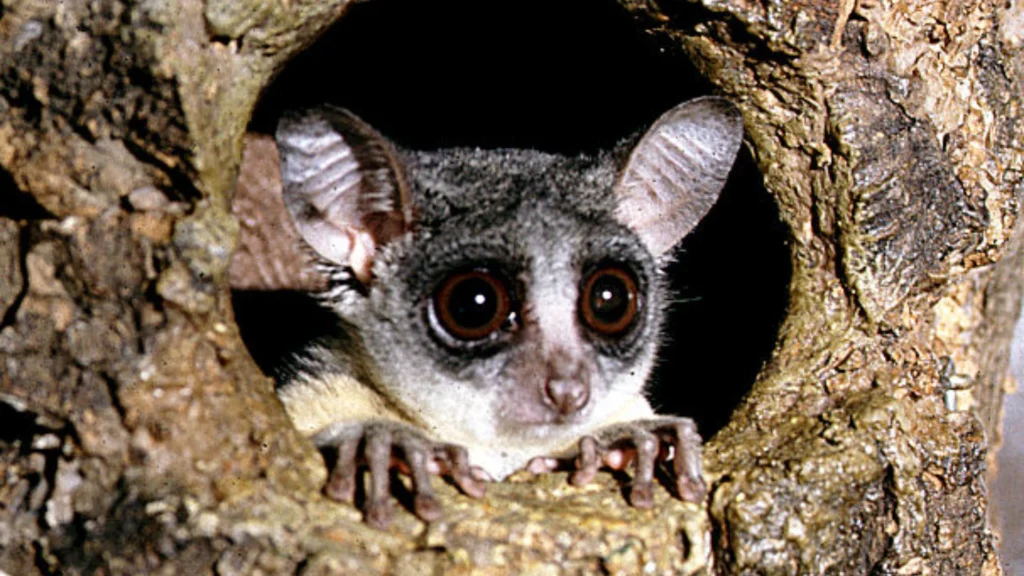
Threats to bushbabies
Habitat loss

As a result of Uganda’s population growth, increased urbanisation, and an increased income for wealthier Ugandans, the demand for animal products is likely to dramatically rise in the coming years. The FAO estimates that by 2050, the demand for meat and milk products in Uganda will more than double and “the production of all types of meat and that of milk will increase by 164 and 41 per cent, respectively.”9https://www.fao.org/3/ca7009en/CA7009EN.pdf
To produce these animal products, land that was once beautiful and iconic savannah and forest – and a home to Uganda’s majestic wildlife – is being turned into farmland. The conversion of land to agriculture is stripping the wildlife of its natural habitat and putting increasing pressure upon the land to support life. In the last 100 years, Uganda has lost 42 per cent of its forest cover, decreasing from 54 per cent to 12 per cent in 2017.10https://illuminem.com/illuminemvoices/deforestation-in-uganda-causes-and-recommendations Encroachment into Queen Elizabeth National Park by illegal cattle ranchers is common11https://conbio.onlinelibrary.wiley.com/doi/abs/10.1111/cobi.12538?campaign=woletoc and the National State of the Environment Report for Uganda 2014, attributes this to “the increasing demand of land for agriculture and fuel wood by the rapidly increasing population growth.”12https://nema.go.ug/sites/all/themes/nema/docs/FINAL%20NSOER%202014.pdf
Of course, a growing population needs food but it would be much more sustainable to meet these needs through the growing of crops instead of farming animals. Animal foods require by far the most land and resources – this is because land is not only used for grazing but also for growing food for the animals. The more animal-based foods we eat, the more endangered our forests become. However, crops are a far more efficient way to feed the growing population and use less land and other natural resources. A vegan diet is associated with only half the cropland demand, grazing intensity and overall biomass harvest of meat-based diets13https://www.nature.com/articles/ncomms11382 so switching to a vegan diet would have a phenomenal impact on reducing deforestation and land degradation in Uganda.
References
References
- 1
- 2
- 3
- 4
- 5
- 6
- 7
- 8
- 9
- 10
- 11
- 12
- 13

